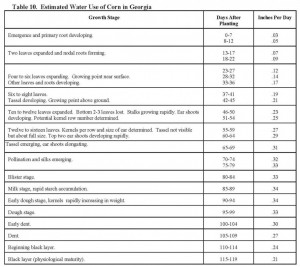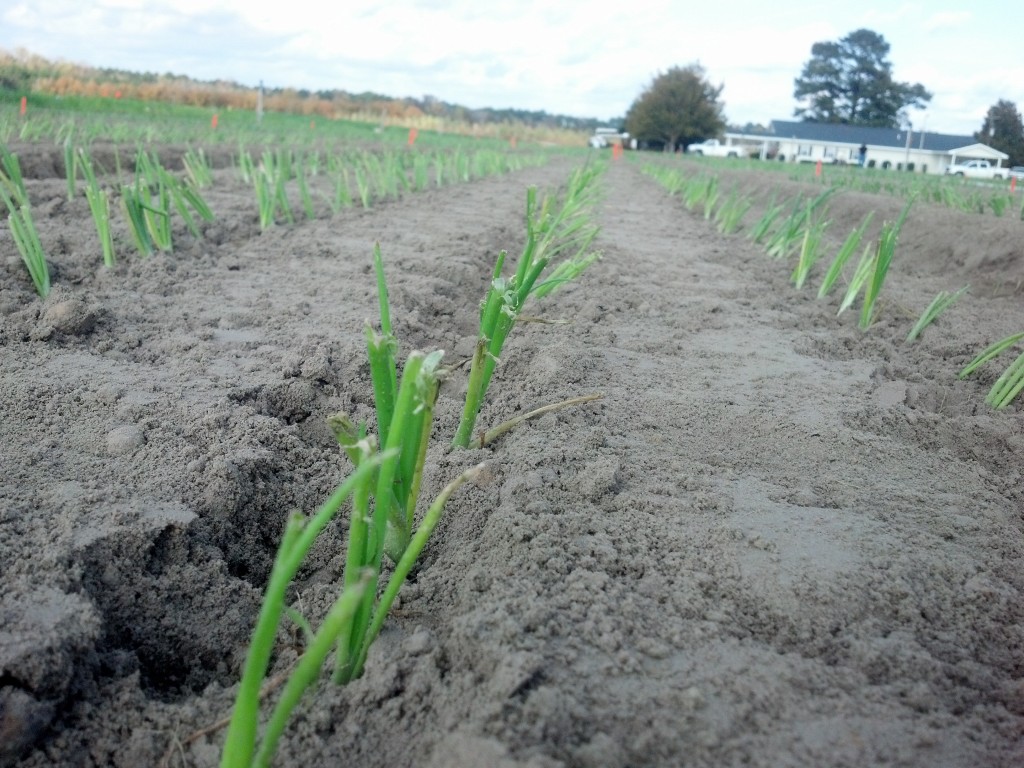The weather has recently dried up a little bit and I have seen many irrigation pivots in corn fields running during the past several days . It is very important to avoid water stress in corn because it will reduce yield potential. Below is some information taken from the 2015 UGA Corn Production Guide about irrigation management of corn. There is a chart containing the approximate amounts of water that a corn crop will actually use at different growth stages, a chart containing information about the water holding capacity of different soil types, and an example of irrigation scheduling using the UGA checkbook method. Soil water holding capacity, water infiltration rate, and expected irrigation efficiency should be taken into account when making irrigation decisions. The amount of water applied will need to be greater than the amount the corn crop actually uses because irrigation efficiency will most likely not be 100%. It is also important to avoid over-watering because it will result in money lost from unnecessary irrigation expense, possible nutrient leaching, and potential yield loss. Click on the each of the charts below to look at a larger picture.


Checkbook Method Example
This example shows how to use the two tables above and the “checkbook method” to determine when and how much to irrigate.
Step 1. The soil type of the corn field is a Tifton soil series. In Table 11, look at the average available water holding capacity in in/ft increments. Assuming a rooting depth of 24 inches (2 ft), the total available water is 2.2 inches (2 ft x 1.1 in/ft)
Step 2. The corn crop is 65 days old. From Table 10, the daily water use is about .31 inches/day
Step 3. Determine the irrigation by setting a lower limit of available water due to soil tension. For this example use 50% of allowable soil water depletion. In other words, only half of the water in the root zone will be allowed to be depleted. Therefore, 1.1 inches of water will be needed to replace the soil water that was either used or lost.
Step 4. Determine the amount of irrigation to apply by dividing the amount replaced by an irrigation efficiency. Assuming 75% as the irrigation efficiency, the amount of irrigation to required is 1.1/.75 = 1.47 or 1.5 inches.
Step 5. Determine the frequency of irrigation by dividing the amount of water replaced by water use per day. An example of frequency of water (either rainfall or irrigation) need: 1.1 in /.31 in per day = 3.5 days.
Step 6. Therefore, it is necessary to apply 1.5 inches of water every 3.5 days to maintain 50% available water for 65 day old corn.
